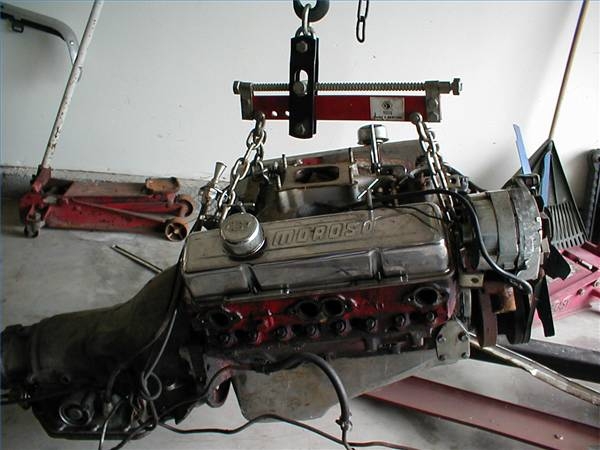
Building an internal combustion engine requires that you have at least basic mechanical knowledge. When working with 4-stroke internal combustion engines, you must understand four systems: intake, compression, combustion and exhaust. The intake stroke pulls in a fuel and air mixture, and the compression stroke compresses the mixture. The mixture is then fired by one spark from the spark plug, and any extra gaseous matter is disposed of through the exhaust.
Install the crankshaft, the camshaft sprocket on the cam, and then install the cam into the engine block.
Install the timing chain or belt. Make sure the timing marks line up. Internal combustion engines have different kinds of timing marks.
Install the pistons and rods with the ring compressor. Cover the ends of the rods with a rubber hose so as not to scratch the cylinder walls. Install the rear main seal using a little oil on the inside lip of the seal. Install the oil pump after priming it with oil.
Install the timing chain cover and the heads. Torque the heads to the proper foot pounds and in the right sequence by starting in the middle and working outward. Different internal combustion engines have different torque specs for head bolts. Be sure to get the year, make and model of the engine correct, as improper torque on the bolts may cause failure.
Install the valve lifters into the block. Install the push rods and rocker arms and adjust, or torque, if necessary.
Install the intake manifold using RTV silicone on the front and back of the block. Install the water pump and all other accessories, including belts. Install and connect all fuel and electrical connections.
Install the starter and connect all electronics. Once the starter is in, you will be able to install the oil pan. To prevent leaks, use RTV on the oil pan gasket.
Install the flexplate or flywheel, depending on the transmission used. Install the oil filter and fill the engine with the proper amount of oil. Refer to the owner's manual to find out how much oil your application uses. It will also tell you the type of oil your internal combustion engine uses.